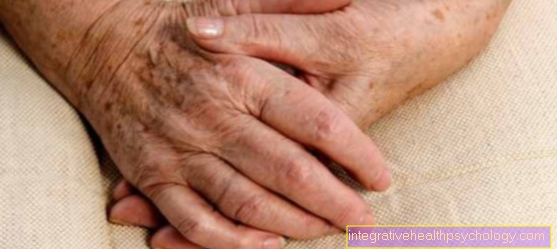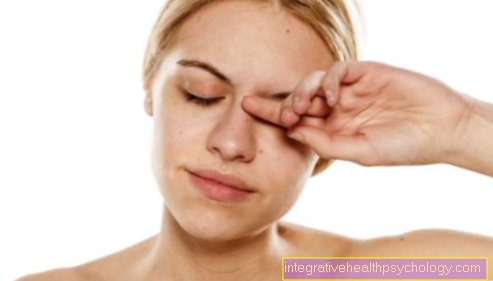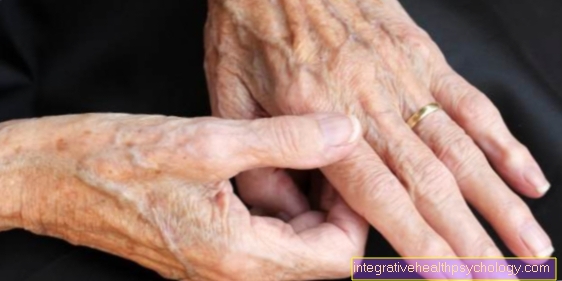Hair follicle inflammation
introduction
The hair follicle inflammation, or folliculitis, as the name suggests, is an inflammation of the hair roots. It usually manifests itself as redness around the hair. Depending on the severity, a yellowish or whitish pustule filled with pus may already have formed. The hair follicle inflammation can occur wherever hair grows. However, inflammation of the hair follicles occurs more frequently in the face, neck, buttocks and genital area and on the extremities. The risk is increased in all areas in which straight body hair is removed by shaving. If hair follicle inflammation gets worse, it can develop into a boil or even an abscess.
Read more on the topic: Abscess on the face

Causes of hair follicle inflammation
The inflammation of the hair follicles is primarily caused by bacteria, especially Staphylococcus aureus, which occurs on most people's skin. Usually it is harmless there, but if other factors come into play, it can lead to inflammation of the hair follicles. But other pathogens, such as pseudomonads or herpes viruses, can also be considered as causes. An acute inflammation of the hair follicle usually occurs when manipulation, e.g. When squeezing blackheads, the pathogens can pass under the skin.
Other factors that favor inflammation of the hair follicles are primarily those shave. By removing the hair will on the one hand the skin self injured. The resulting so-called microtraumas can become a Penetration of the pathogen into the skin to lead. Together with the resulting irritation, this easily causes inflammation of the hair follicle.
Another problem can be ingrown hairs represent. These mainly occur when removing body hair and can become a problem there. This is partly due to the Structure of hair, on the other hand creates the constant warmth especially in the genital area and the Armpit optimal conditions for Increase in skin germs.
Please also read: Ingrown armpit hair - what to do?
Also very hairy men have, just at profuse sweating in summer an increased risk to develop a hair follicle inflammation. Since heat and moisture promote the development of hair follicle inflammation, you should too when using care products be careful. Too much or too greasy creams etc. can multiply the problem.
Can also be a Acne in need of treatment, can lead to an increased incidence of hair follicle infections.
An existing one diabetes Disease or a Long-term therapy with cortisone increase the likelihood of folliculitis.
diagnosis
The diagnosis hair follicle inflammation is usually a classic Eye diagnosis. Apart from the description of the complaints and the typical visual findings, no further examinations are usually necessary.
Can the hair follicle inflammation with the common methods do not treat, it happens frequently Recurrence or if there are other reasons, the exact pathogen can be determined. This must be done from the hair follicle a smear taken become. From this a Pathogen detection respectively.
Is there any evidence that certain bacteria or Mushrooms the cause can also a microscopic examination of the affected hair follicle further help. This examination is always supplemented through a thorough medical history on special causes.
Frequencies and risk factors
Many people occasionally have problems with hair follicle inflammation. Especially in the group of those who Wet razor use, it happens more often. However, regardless of whether they use shaving or grooming products, some people tend to develop follicle inflammation more often than others.
People too with a reduced immune system are often affected. E.g. Patient with Diabetes mellitus or taking Immunosuppressants. With these there can even be one chronic hair follicle inflammation come. Also a general one unhealthy lifestyle can, just like smoking, lead to more frequent inflammation of the hair follicle. The appearance is there regardless of age.
Symptoms of hair follicle inflammation
As already described, the inflammation of the hair follicle manifests itself primarily through reddening in the area of the hair roots. In addition, there is sometimes a purulent pustule. An important criterion is that the pustule is always pierced by a hair.
The inflammation of the hair follicles can be accompanied by itching or a painful burning sensation. Usually only a single hair root is affected, but an entire area can also be inflamed. This occurs mainly in men in the hairy chest area. If no treatment is given, the inflammation of the hair follicles can develop into a boil or even an abscess.
Localization of hair follicle inflammation
Inflammation of the hair follicles on the head
The high density of hair follicles on the scalp increases the likelihood of such inflammation, which is also known as folliculitis in technical terms. It occurs more frequently in the summer months when the scalp is sweating. This promotes bacterial growth and the follicle exit is clogged with excess horn material. By far the most common pathogen responsible for inflammation of the hair follicles is the germ Staphylococcus aureus.
Read more on this topic: Boils on the head - how dangerous is it?
The inflammation of the hair follicles on the scalp is particularly noticeable when washing the hair. Those affected feel pressure pain over the inflammation. A kind of small pimple can be felt at the site of the hair follicle inflammation.
Particularly in people with a poor immune situation, diabetes mellitus and circulatory disorders, there is increased inflammation of the hair follicles. Especially with such risk factors, furuncles or even real abscesses can develop from hair follicle inflammation.
There is a very rare, chronic inflammation of the hair follicle of the scalp, which is known as folliculitis decalvans. It leads to the destruction of the hair follicles, which is associated with permanent hair loss. The causes of this type of hair follicle inflammation, which affects more men than women, are not entirely clear. In addition to immunological and genetic factors, the bacterium is also involved Staphylococcus aureus discussed. Unlike normal hair follicle inflammation, it heals Folliculitis decalvans scarring and leads to hair loss. Therapy includes various antibiotics that can be applied to the scalp or taken in the form of tablets. Glucocorticoid creams are also used in the treatment of Folliculitis decalvans.
For more information, see: Hair follicle
Inflammation of the hair follicles of the nose
In principle, the inflammation of the hair follicles in the area of the nose does not differ from the symptoms in other places. Due to the special position, the whole thing in the nose area can be much more uncomfortable and also more difficult to treat. Another danger is that the supply area, especially in the area of the root of the nose, is very closely connected to blood vessels that are connected to the brain. Therefore, if the hair follicle inflammation is not treated or another inflammatory process, germs can enter the area of the brain and cause serious complications there. This can lead to inflammation of the meninges or the entire brain. Sinus vein thrombosis and other thrombotic events in the brain can also be triggered by inflammation in the nasal area. Therefore, inflammation in this area, as in general in the upper half of the face, should always be taken seriously.
As a further complication, a boil can also form here. In the area of the nose in particular, inflammation of the hair follicles should be treated as quickly as possible. In addition, especially when the inflammation has spread, antibiotics are used not only as an ointment, but also orally or even as an infusion. In addition, as long as the inflammation persists, the upper lip should be moved as little as possible, since the nose is always moved along with it and this can promote the spread of germs.
Inflammation of the hair follicles in the ear
In the ear, hair follicle inflammation occurs by the same mechanism as in the rest of the body. Bacteria, which normally do not cause problems on the skin, invade the skin through small injuries and cause inflammation there. In the area of the ear, these injuries are often caused by the use of cotton swabs, in the swimming pool, or when wearing hearing aids or hearing protection. At the same time, this also creates a climate that is particularly favorable for the multiplication of pathogens. An inflammation of the hair follicles in the area of the ear can relatively quickly turn into a so-called otitis externa. This is an inflammation of the external ear canal.
Often you only notice the inflammation of the hair follicles in the ear when there is pain, oozing or hearing loss on the affected side. The main risk here is that the inflammation will spread to the eardrum or even penetrate into the middle ear. The involvement of the cartilage in the external auditory canal is also a complication that should be avoided at all costs. If left untreated, permanent hearing loss can result.
During therapy, the ear is first thoroughly cleaned here. Then antibiotic or, depending on the cause, antifungal (fungicidal) drops are used in the ear. If the course is severe, it may also be necessary to take the antibiosis orally or intravenously. If there is already earache, it can be treated with ibuprofen. Cooling compresses can also relieve the pain. A pronounced inflammation of the hair follicles in the ear canal should definitely be examined and treated by an ENT doctor in order to avoid long-term effects.
Inflammation of the hair follicles in the genital area
Inflammation of the hair follicles can also occur in the genital area, since many people naturally have dense hair growth here too. Hair follicle inflammation is promoted by increased sweating, especially when wearing tight clothing and at high outside temperatures.
Intimate shaving is also a risk factor for the occurrence of inflammation of the hair follicles in the genital area. Microorganisms can enter the skin through the smallest of cuts and lead to infections of the hair follicle, which are very uncomfortable and painful, especially in the sensitive genital area.
In most cases, special therapy is not necessary. The same recommendations apply as for inflammation of the hair follicles in other parts of the body.
In the case of pronounced boils or carbuncles, however, antibiotic therapy is necessary. Signs of a pronounced infection or even an abscess are severe swelling in the genitals, very severe pain or general symptoms such as fever. In such a case, a doctor must be consulted immediately.
Read more on this topic: Treatment of boils in the genital area
In order to avoid such injuries, especially when shaving your intimate area, it is advisable to always use sharp and clean blades and to shave in the direction of hair growth.
Inflammation of the hair follicles on the bottom
Inflammation of the hair follicles on the buttocks is perceived as particularly uncomfortable, as sitting here puts a lot of mechanical strain on them. You can hardly avoid pressure pain. A simple hair follicle inflammation on the bottom can also develop into a boil, which feels like a hard knot and can spontaneously drain pus. In this case, general symptoms such as fever are also possible.
It is important not to express boils but also simple follicle infections. Cooling compresses can help relieve the discomfort. In some cases, local antibiotics and antiseptic ointments can be useful. However, therapy is not always necessary and recommended.
Read more on this topic: Boils on the buttocks - how to treat it correctly
Inflammation of the hair follicles on the buttocks must never be accompanied by anal fistulas or coccyx inflammation (Pilonidal sinus) can be confused. These diseases are sometimes expressed by similar symptoms, but require special therapy.
Inflammation of the hair follicles on the groin
For many people, the groin is one of the less hairy areas of the body, but hair follicle infections can also be found here. A fold of skin forms in the groin, especially when sitting, in which sweat can accumulate and promote the development of follicle inflammation.
Especially people who are very overweight and who have other risk factors such as diabetes mellitus have an increased risk of developing follicle inflammation in the groin. However, therapy is not absolutely necessary. It should be considered if hair follicle infections are common.
Inflammation of the hair follicles on the legs
Hair follicle infections mainly affect heavily hairy parts of the body. The legs are not affected as often as the scalp or, in men, the chest and torso area, but of course hair follicle infections are also possible here.
They express themselves in the same way as in other parts of the body. Local tenderness and reddening of the skin are typical symptoms.
Shaving the legs can also promote bacterial hair follicle inflammation, as the smallest skin lesions make it easier for bacteria to enter the skin. To carry out the shave as gently as possible, sharp and clean blades should always be used. It is also advisable to use shaving foam and only shave in the direction of hair growth. This also minimizes the risk of inflammation of the hair follicles.
Therapy of hair follicle inflammation
The inflammation of the hair follicles can usually be treated with topical ointments. Depending on the underlying pathogen, antibiotic (e.g. Fucidine, Refobacin®) or antifungal agents are used. In very severe cases or if large parts of the body are affected, it may also be necessary to treat the hair follicle inflammation with systemic antibiotics. Treatment with the help of phototherapy can also contribute to healing. As a supplement, disinfecting solutions, e.g. alcohol-based, can be applied externally. There are correspondingly disinfecting shampoos for the head area. Only if a boil or abscess has formed from the inflammation of the hair follicle may it be necessary to proceed with surgery. If the follicle inflammation developed on the basis of diabetes, it is important to check the blood sugar level.
Ointments for inflammation of the hair follicles
In general, superficial inflammation of the hair follicle does not need to be treated. They usually heal on their own without consequences. In some cases, however, it is helpful to use ointments and creams. These contain antiseptic or antibiotic additives. Common antiseptic additives are chlorhexidine, octenidine, triclosan, or polihexanide. Fusidic acid is considered the antibiotic additive of choice.
Antibiotics for inflammation of the hair follicles
Superficial inflammation of the hair follicles does not always have to be treated with antibiotics. If this occurs regularly, the main focus should be on eliminating the causative factors, such as an immune deficiency. However, topical antibiotics can also be used as support. This means that the antibiotics are not taken in the form of tablets, but are applied directly to the skin.
The antibiotic of choice in these cases is fusidic acid. Retapamulin can also be recommended, whereby fusidic acid is usually preferred due to its better experience.
Systemic antibiotic therapy, in which antibiotics are also taken in the form of tablets or administered via the vein, can only be recommended in very rare cases. This is especially the case when there is a severe immune deficiency. In particular, the antibiotics clindamycin, cefalexin or flucloxacillin are used.
Homeopathy for hair follicle inflammation
Myristica sebifera is the homeopathic remedy of choice for emptying hair follicle inflammation. Belladonna can be used in the event of a strong inflammatory reaction and overheating of the region. Pyrogenium or Hepar sulfuris also have a similar effect. Thuja, Sulfur iodatum or Staphylococcinum are also used. As mentioned above, the inflammation of the hair follicles can also lead to serious complications, which is why you should not try to treat it on your own for too long. The main approach of homeopathy in this area is more the long-term strengthening of the immune system and improvement of the skin flora than acute therapy. The aim is to try to influence the skin in such a way that the hair follicle inflammation no longer occurs or occurs much less frequently. Especially in the case of chronic occurrences, e.g. Silicea is also used, which should also ensure a more thorough healing.
Proven home remedies for a follicle inflammation
In the field of phytotherapy, oils or ointments made from myrrh or rosemary have an anti-inflammatory and thus supportive effect. Warm compresses with chamomile, quark, healing earth or calendula should have a disinfectant effect and alleviate the symptoms. Sulfur baths are also supposed to alleviate the symptoms and, above all, avoid recurrence.
Sacks with hay flowers or chamomile flowers are primarily intended to accelerate healing. Tea tree oil, St. John's wort oil and aloe vera also have a disinfectant effect. However, you should be careful with oil-based products as the oil itself can in turn promote the development of hair follicle inflammation.
So-called pulling ointment (e.g. Ichtholan®) should be able to help empty the pus without pressing open the pustule itself.
Read more on the topic: Ichtholan®
Means that are supposed to strengthen the immune system can also contribute to healing. These include, for example, Echinacea, Umckaloabo or Metavirulent, which are supposed to activate the immune system directly. Vitamin preparations can also improve the immune system.
prophylaxis
In order to prevent the development of inflammation of the hair follicles, it is important to be active adequate hygiene to pay attention to. It is particularly important to improve the resulting pustules not self-expressingbecause that is usually more likely to cause inflammation aggravated. Usually help here disinfecting measures. You can also use aftershave or other after the wet shave Solutions with disinfecting ingredients important to prevent infection of the small injuries. Lovely products should avoid. In addition, you can disinfect the razor after shaving, to prevent the spread of germs. In addition, one should make sure that the razor blades sufficient sharp are. If none of that helps, you should have one Switch to dry shaving or think about something else.
If you have Underlying diseases, how diabetes or Allergies Good therapy can reduce the occurrence of inflammation of the hair follicles. If you are prone to hair follicle inflammation, you should wear light clothing, especially in summer to prevent very profuse sweating. Generally a healthy lifestyle also recommended in this case as a preventive measure.
Further topics from this area

Pimples
Pimples are caused by blocked skin pores. Typically, pimples appear externally as inflamed bumps on the skin that can be filled with pus.
Here you get to the topic: Pimples

boil
A boil is a purulent inflammation of the hair follicle. They are caused by bacteria that are caused by injuries such as caused by shaving, get into the skin.
Here you get to the topic: Boils


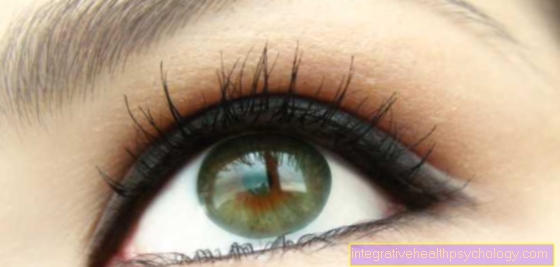
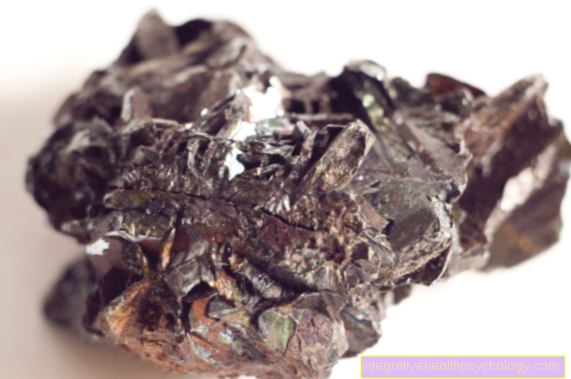
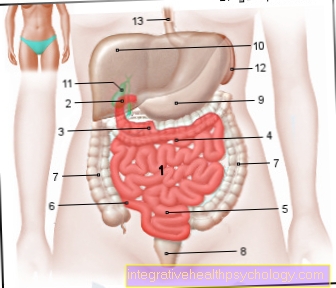



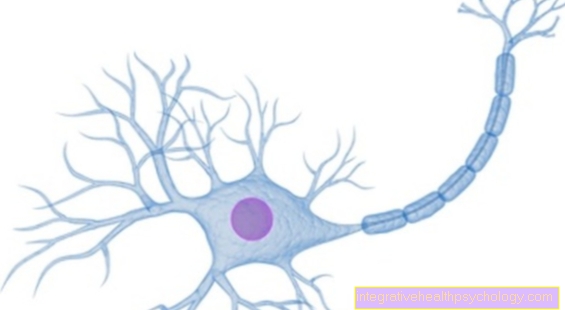

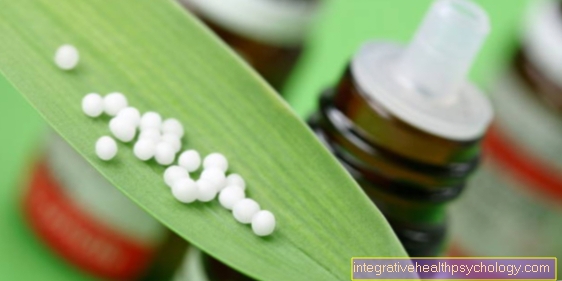
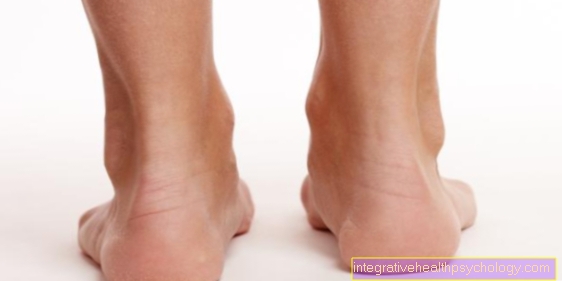

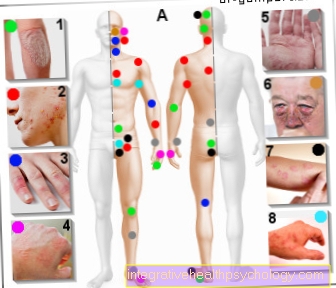


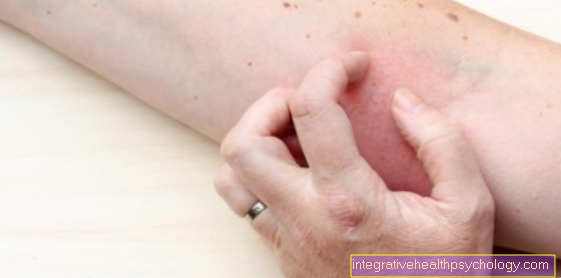



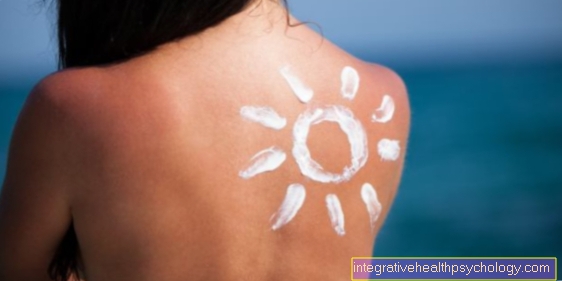
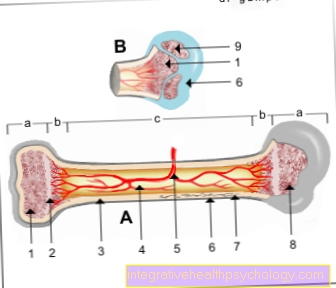
.jpg)



